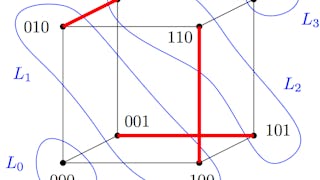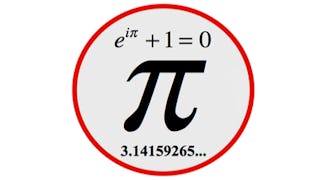This course is aimed at anyone who has interest in the lens through which mathematicians view democracy. You will learn theories and approaches to the mathematics of voting.


您将学到什么
Mathematics of voting
Theories of democracy
您将获得的技能
要了解的详细信息
4 项作业
了解顶级公司的员工如何掌握热门技能

该课程共有4个模块
This module sets the stage for the entire Teach Out. We begin by discussing the nature of mathematics (as opposed to arithmetic) and develop a workable abstract model for democracy: a function that takes individual preferences and returns a group decision. We then look closely at different methods for two-party elections, fairness criteria we want these functions to have, and conclude that only the Simple Majority method satisfies those criteria.
涵盖的内容
6个视频1篇阅读材料1个作业2个讨论话题
This module builds on the work from Module 1 by considering elections with three (or more) candidates. We examine various decision functions (such as Plurality and Borda Counts) as well as properties we want those functions to have. We conclude with Arrow’s Theorem that shows that there are no decision functions satisfying basic fairness criteria.
涵盖的内容
7个视频1篇阅读材料1个作业2个讨论话题
In the previous modules we assumed that each voter ranks the candidates from most to least desirable; these individual rankings are the inputs to the decision functions. In this module we question the viability of asking voters to rank both for psychological reasons (it is very difficult to rank a long list of options) and—more to the point of this Teach Out—for mathematical reasons. We model preference using a simple game played with dice that illustrates non-transitive preference: A is better than B, B is better than C, but C is better than A!
涵盖的内容
3个视频1篇阅读材料1个作业1个讨论话题
This module considers mathematical issues arising in representative democracy in which elected officials make decisions for the larger population. In the United States House of Representatives, the number of representatives from a given state is proportional to the population of that state. However, since the number of representatives from a state must be a whole number, and the total number of representatives is 435, we need a method by which seats are allocated to states. We present the apportionment methods of Hamilton and Jefferson, and discuss problems arising with these methods. We conclude with a theorem of Balinsky and Young that shows there are no apportionment methods satisfying basic fairness conditions.
涵盖的内容
7个视频3篇阅读材料1个作业1个讨论话题
位教师

从 Math and Logic 浏览更多内容

Johns Hopkins University
 状态:预览
状态:预览Shanghai Jiao Tong University
 状态:预览
状态:预览University of Michigan
 状态:预览
状态:预览Stanford University
人们为什么选择 Coursera 来帮助自己实现职业发展




常见问题
To access the course materials, assignments and to earn a Certificate, you will need to purchase the Certificate experience when you enroll in a course. You can try a Free Trial instead, or apply for Financial Aid. The course may offer 'Full Course, No Certificate' instead. This option lets you see all course materials, submit required assessments, and get a final grade. This also means that you will not be able to purchase a Certificate experience.
更多问题
提供助学金,



